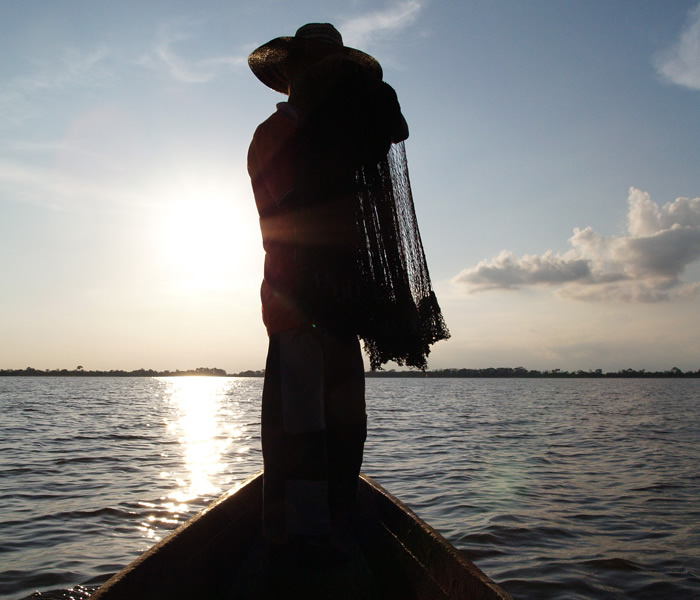There are seven migratory species in Sogamoso river, the second most important affluent of Magdalena river, with 23% of the food production of 80% of the national population, which is being seriously affected by the construction of this dam.
Ángela Liliana Gómez, student of the Biology Master Program, along with Professor Gabriel Pinilla Agudelo, carried out an investigation to determine the effect in rainy and dry seasons in Sogamoso river and the swamps to predict the future effect of the construction of Hidrosogamoso.
"The project will have two initial stages: the sampling of Sogamoso river, that was performed by a colleague, and I focused specifically in the swamps, particularly in the Llanito and San Silvestre ones in order to determine the changes in the fish communities," explained Ángela Liliana Gutiérrez.
One important action was to preserve the hydrologic cycle in normal conditions to guarantee all the dynamics and the food offer for the fish community, "that is not the same along the year," asserted the student.
Anyway, the construction of the dam will affect the fish"s food, a situation that will be reflected in terms of reproduction. Likewise, the reduction of the caudal will diminish or eliminate the minor connections among spouts, rivers and swamps.
According to the researcher, these migratory species need a connection of water bodies to guarantee a permanent reproduction.
"This community will be negatively affected in its reproductive and alimentary development due to this construction of a wall, and, depending of the characteristics of this wall, the impact will be bigger," explained Gutiérrez.
Anyway, she added that the construction of this dam is a fact, and that all construction works should involve a research part for diminishing the environmental impact. "The academy should work with the industry in order to find mechanisms for mitigating the effects in the communities, on this case, fish communities." To fulfill this objective, monthly monitoring has to be performed, as other countries in the world do.
 Correo Electrónico
Correo Electrónico
 DNINFOA - SIA
DNINFOA - SIA
 Bibliotecas
Bibliotecas
 Convocatorias
Convocatorias
 Identidad UNAL
Identidad UNAL



